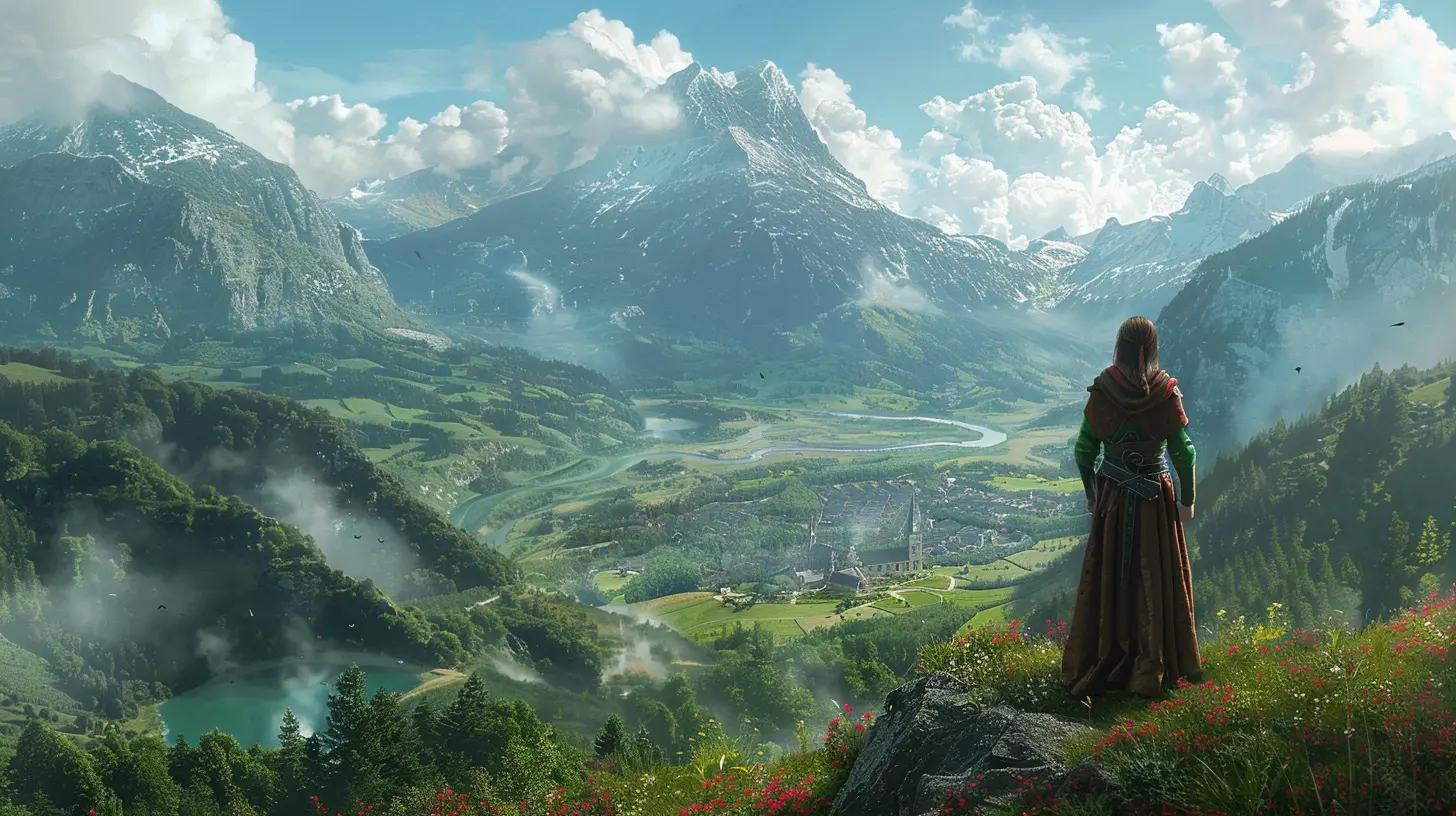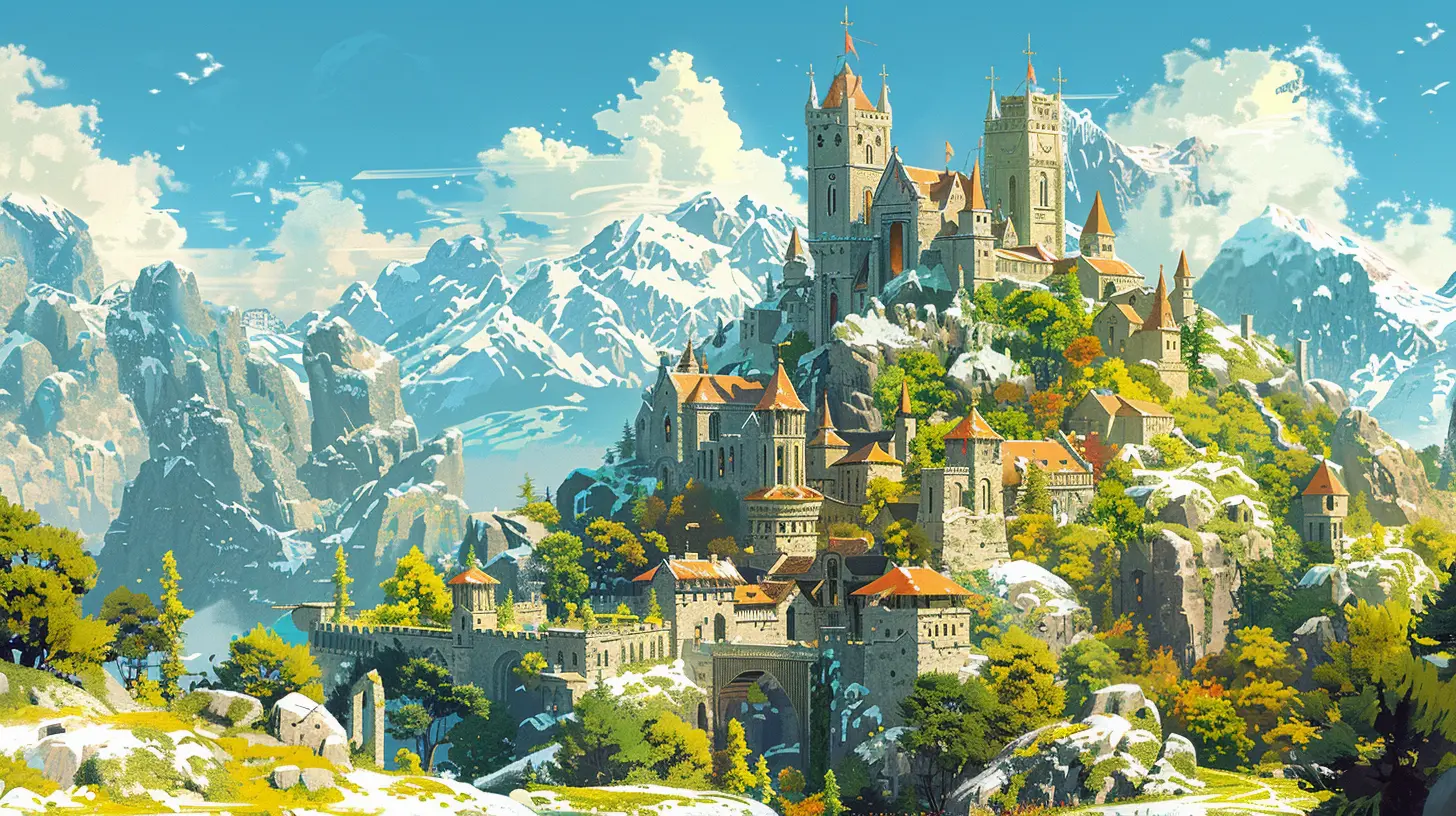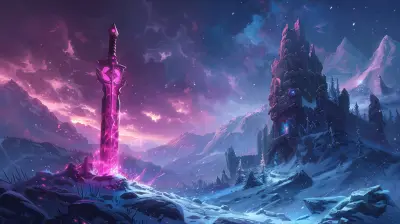Creating Your Own World: Tips for Designing Epic RPG Settings
18 August 2025
Have you ever dreamed of creating your own epic world for an RPG (role-playing game)? A world so immersive, players feel like they’ve stepped into a living, breathing universe? Whether you're building a tabletop campaign, crafting a homebrew video game, or even writing a novel, designing an RPG setting is one of the most exciting (and challenging!) creative endeavors out there.
But where do you even start? How do you make a sprawling fantasy world feel consistent, engaging, and downright epic? Don’t sweat it—I’ve got your back. Let’s break down the process step by step, diving into some killer tips to take your RPG setting from "meh" to "legendary."
1. Start With a Big Idea
Every great world begins with a spark—and no, it doesn’t have to be a fully fleshed-out map with ten kingdoms and 500 years of history. Start small. What’s the core concept that makes your world unique? Is it a shattered planet floating in space? A dystopian realm ruled by sentient AI? Or maybe a magical land where the seasons are controlled by rival factions?Think of your setting as the hook that pulls your players in. The "big idea" is your world’s identity—its soul. Nail that down first, and all the details will naturally fall into place.
2. Give Your World a Flavor
Once you have your big idea, sprinkle in some flavor. What kind of vibe do you want your world to have? Is it dark and gritty, full of moral ambiguity? Or maybe it’s whimsical and filled with lighthearted adventures? Think about the tone and mood you want to convey.For example:
- A post-apocalyptic wasteland might call for harsh landscapes, scavenger towns, and a heavy dose of survival storytelling.
- A high-fantasy kingdom could include sweeping vistas, enchanted forests, and bustling cities teeming with intrigue.
It's like cooking—your flavor is the spice that makes your dish stand out. Don’t be afraid to go bold!
3. Build Geography That Sparks Adventure
Now let’s talk maps. Geography plays a huge role in storytelling. Mountains, rivers, forests, deserts—each element contributes to the personality of your world. But here’s the trick: don’t overcomplicate things.Sure, you could design an uber-detailed world map with every tree labeled, but remember—this isn’t a geography textbook. Your map should inspire adventure! Think about creating landmarks that immediately intrigue your players. A haunted mountain pass? A city built on a floating island? A cursed swamp? Boom, instant hooks for exploration.
And don’t forget about the practical stuff. Where do people live? Where do they get food and water? How do they travel? These little details add depth and realism.
4. Craft Cultures and Societies
No epic RPG setting is complete without compelling societies. But here’s the thing: cultures aren’t just static background noise. They’re living, breathing systems that shape your world and its people.Ask yourself:
- What are the major factions, kingdoms, or tribes in your world?
- What makes their cultures unique? Their language, clothing, architecture, beliefs?
- Are there any conflicts between these groups? (Spoiler: conflicts make for GREAT storytelling.)
For example, imagine a bustling desert empire built around ancient water magic. Maybe their entire culture revolves around water conservation, leading to rituals and laws that seem strange—or even oppressive—to outsiders. Boom, you’ve just created a fascinating cultural dynamic.
5. Create a History That Leaves a Mark
Want your world to feel alive? Give it a history. Events from the past—wars, revolutions, natural disasters, forgotten civilizations—leave scars that shape the present.But here’s the kicker: don’t dump all that history on your players at once. Instead, let them discover it organically through exploration and interactions. Maybe they find ancient ruins buried in the jungle or hear stories of legendary heroes from a bygone age. It’s like leaving breadcrumbs for your players to follow.
Oh, and remember—the past doesn’t have to be perfect. Real worlds are messy, full of contradictions and unanswered questions. Embrace the mystery!
6. Add Magic (Or Not)
What’s an RPG setting without a little magic? (Well, okay, plenty of RPGs work just fine without magic, but you get the idea.) If you’re including magic in your world, think about how it works. Is magic a rare gift or a common skill? Does it come with risks? Are there rules and limits, or is it wild and unpredictable?For instance:
- In Brandon Sanderson’s Mistborn series, magic is tied to metals, creating a unique system with clear rules.
- In contrast, something like Tolkien’s Middle-Earth treats magic as a mysterious, almost spiritual force.
And hey, if you’re going for a more grounded vibe, feel free to ditch magic altogether. Instead, focus on tech, politics, or natural wonder as your world’s "special sauce."
7. Design Memorable NPCs
What’s a great setting without great characters? NPCs (non-player characters) are the heart and soul of your world. They make it feel lived-in and dynamic.When crafting NPCs, think about:
- Roles: Who are the movers and shakers in your world? Kings, merchants, rebels, scholars—they all have a part to play.
- Motivations: What drives them? Greed? Love? Revenge? Complex motivations = engaging characters.
- Quirks: Give your NPCs unique traits to make them memorable. Maybe the grizzled blacksmith has a soft spot for poetry, or the villainous warlord is secretly afraid of spiders.
Good NPCs bring your world to life. They’re the bridge between your players and your setting.
8. Let the Players Leave Their Mark
Here’s a pro tip for GMs (Game Masters): your world isn’t just your creation. It’s a playground for your players, too. Let them shape it through their actions.If the players decide to overthrow a corrupt ruler, show how that ripple effects the world. If they discover a hidden artifact, let it alter the balance of power. The more your players feel like they’re part of the world, the more invested they’ll be in your story.
9. Keep It Flexible
One of the biggest mistakes you can make is overplanning. Look, I get it—it’s tempting to write 200 pages of lore for your world. But here’s the deal: RPGs are unpredictable. Players will always find ways to surprise you, derail your plans, or explore corners of the map you never fleshed out.Leave room for improvisation. Think of your world as a sandbox, not a script. Give your players the freedom to roam, and be ready to adapt on the fly. Trust me, it’ll make your game way more fun for everyone.
10. Have Fun With It
Last but not least, don’t forget to enjoy the process. Worldbuilding can be overwhelming, but it’s also one of the most rewarding creative outlets out there. Embrace the trial and error, and don’t be afraid to experiment. After all, it’s YOUR world. Make it one you’d want to get lost in.Final Thoughts
Designing an epic RPG setting isn’t about getting every detail "right." It’s about creating a world that feels alive, where players can lose themselves in grand adventures and unforgettable stories. Start with a big idea, build with intention, and—most importantly—have fun! Now get out there and start crafting your masterpiece. The next legendary RPG world is waiting… and it’s yours to create.all images in this post were generated using AI tools
Category:
Role Playing GamesAuthor:

Madeleine McCaffrey
Discussion
rate this article
2 comments
Fleur Reilly
Great insights! The tips on world-building are practical and inspiring, making it easier for aspiring RPG designers to create immersive experiences.
November 28, 2025 at 5:10 PM

Madeleine McCaffrey
Thank you! I'm glad you found the tips helpful and inspiring for your RPG design journey!
Sage Bryant
Great tips! Crafting unique worlds enhances immersion and storytelling in RPGs. Can't wait to explore!
August 19, 2025 at 3:02 AM

Madeleine McCaffrey
Thank you! I'm glad you found the tips helpful. Enjoy crafting and exploring your worlds!


